A valuable food preservation method that has been used for generations is dehydration. By removing the moisture from veggies, herbs and meats, it preserves foods for winter consumption. Because minimal heat is used in the process, only a small amount of nutrients are lost (some sources claim about 5%) using this method.
Equipment Needed for Dehydrating Foods
Looking into history, the Ingalls family strung up peppers and herb bunches to dry in the attic in Little House in the Big Woods. Native Americans dried fish and other meats near a fire for winter food. Our Amish neighbors still dry apples on a rack above their wood cookstove and later will rehydrate them to to make the most amazing snitz pies.
Today the concept of dehydrating is the same but we have some modern tools to help us along. If you are in a warm, dry climate you can simply dehydrate your foods on racks in the open and let the sun do the work or hang plants in bunches. In areas with humid summers (like here in Ohio), food dehydration works best with supplemental heat. A slow oven can be used for drying herbs on a cookie sheet, but my favorite dehydration tool is my Excalibur dehydrator that comes in several sizes. I regularly fill my 9-tray unit during the summer and appreciate the temperature control feature that lets me choose from 95-155 degrees.
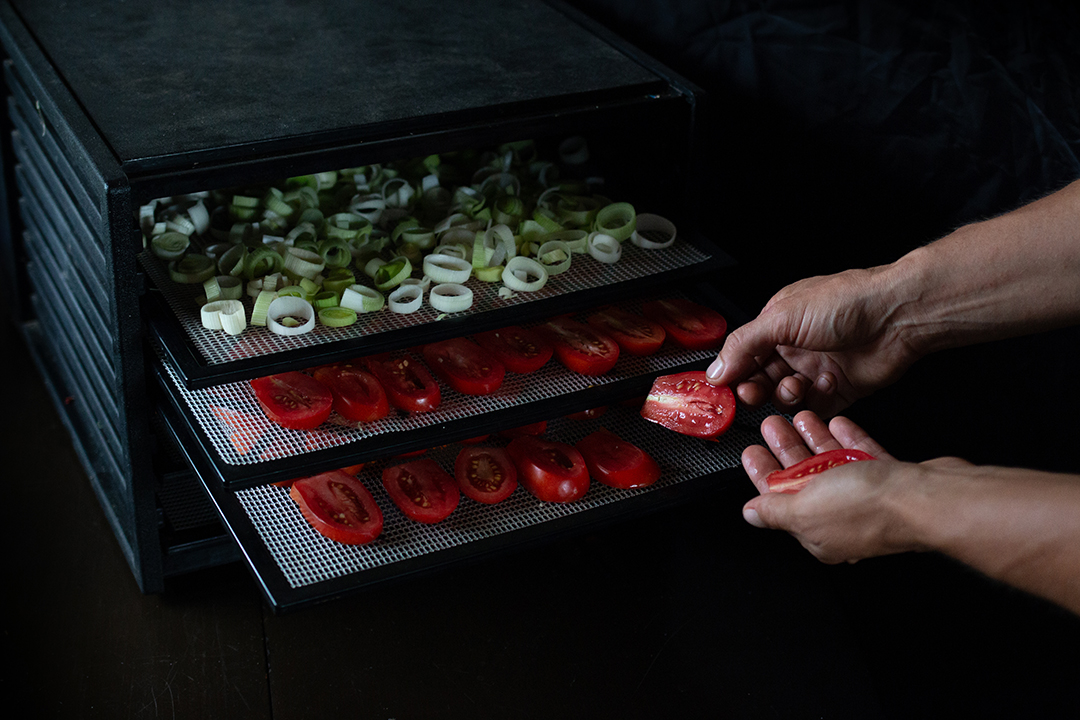
Foods That Are Great for the Dehydrator
It is important to know what foods are good choices for the dehydrator and avoid items that lose too much flavor or turn into rocks that no one can chew. Tomatoes are great for dehydrating. Either slip the peel off by dipping them in hot water for 30 seconds or trim off skin, lay slices on the trays and usually in about 2 days they are ready for storage. Many recipes using dried tomatoes require rehydrating them in water first before using. Another favorite dried veggie is leeks which I cut into rounds and they are a great addition to winter soups. This year we had an overabundance of shiitake mushrooms so we gave dehydrating mushroom slices a try and they are delicious in broth, soup and stir fry. For a list of additional vegetables for the dehydrator, check out these books: Preserve it Naturally by Excalibur, The Dehydrator Bible, and The Ball Blue Book (there is a section on dehydrating).
Commercially dehydrated fruits typically are treated with sulfur dioxide to retain color but by doing them at home, you can control the ingredients you add. The handiest way to prepare apples for the dehydrator is to use the peeler/corer/slicer and lay the pieces on the trays. Pears have a thinner skin, and I prefer to just cut them in eighths and leave the skin on to dry them.
Culinary herbs that retain flavor well when dried include rosemary, sage and thyme. I found things like parsley, cilantro and basil lose quite a bit of flavor during the drying process and my family prefers them frozen or fresh. Medicinal herbs are probably what I dehydrate in the largest quantities. Most leafy herbs like peppermint and stinging nettle can be harvested in the morning after the dew has dried, put in the dehydrator at 105 degrees and be crisp dry by evening. If stems are included, always check to be sure they are completely dry as well before storing them. By the end of summer, I have a whole shelf of tea herbs and then we make various mixes as gifts and for our daily winter tea drinking.
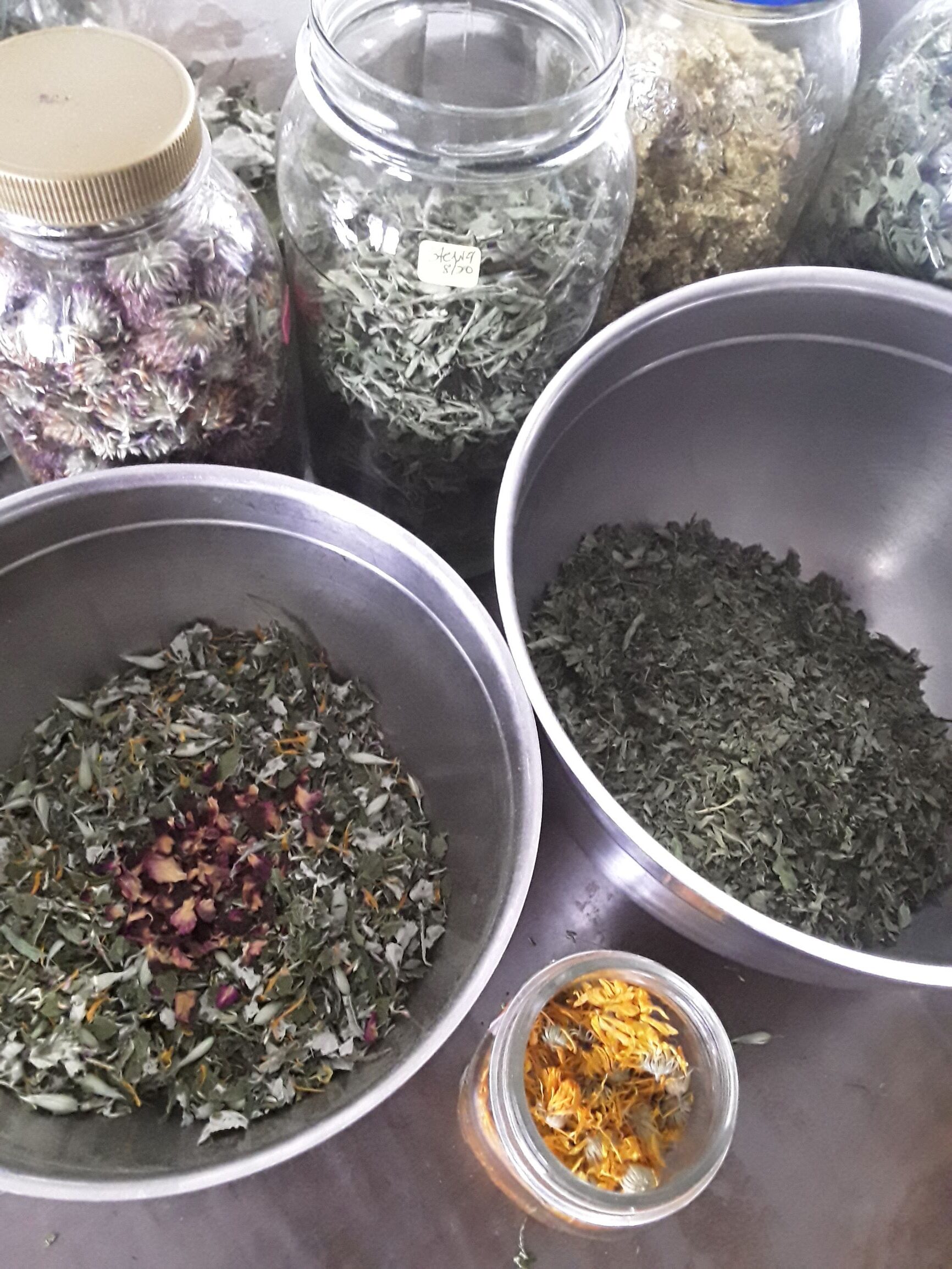
A fun food hack with the dehydrator is to use it to make kale chips. Tear kale into chip size pieces, drizzle with just enough olive oil to toss, sprinkle with seasoning salt and dehydrate at 155 for 1 ½ to 2 hours. No burning which happens so often in the oven!
How to Store Dried Food
Once completely dried, storage of these foods is simple. Any airtight container or jar with a rubber seal works. Store on a cool shelf out of the light to retain optimum flavor and color. Most dehydrated foods retain their flavor well for a year, and I aim to use up all my dehydrated items within 2 years. For older herbs, I sniff test to see if they still have a strong aroma, or they get added to the compost pile or fed to the chickens.
With these ideas in hand, make plans now for what dried foods you will add this season to your preserved food stash, and make sure you have the equipment and books handy when it is time to dehydrate.
Editor’s Note: This article was first posted in March 2021.
*****
 Karen Geiser is a regular demonstrator and homesteading class teacher at Lehman’s.
Karen Geiser is a regular demonstrator and homesteading class teacher at Lehman’s.






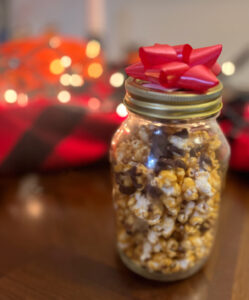




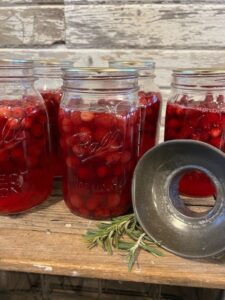

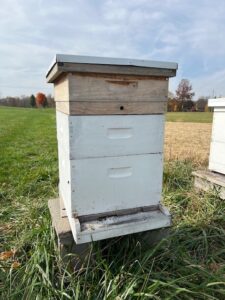
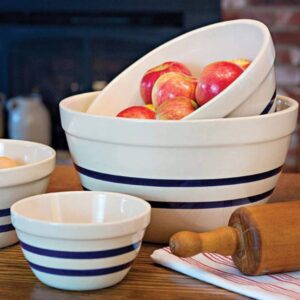
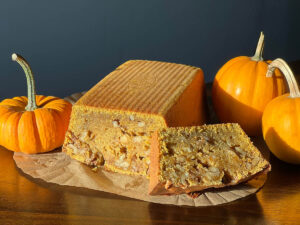

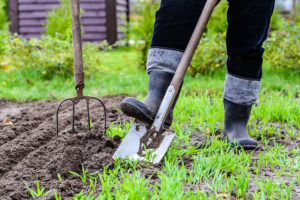







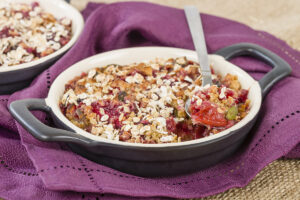
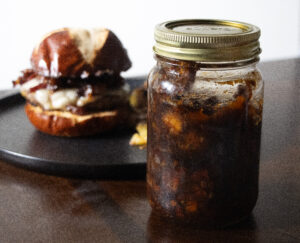

Thank you for the great tips on dehydration
Can’t wait to try this. I’ll start with Kale and Spinach.
I’ve done a lot of apples in the past.